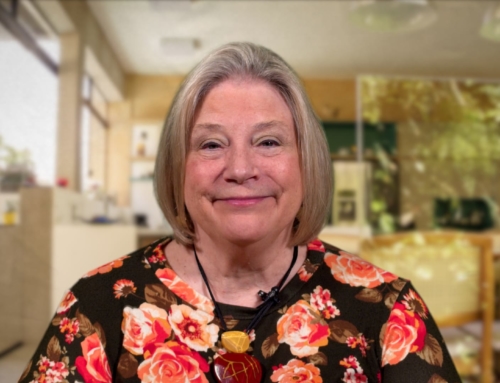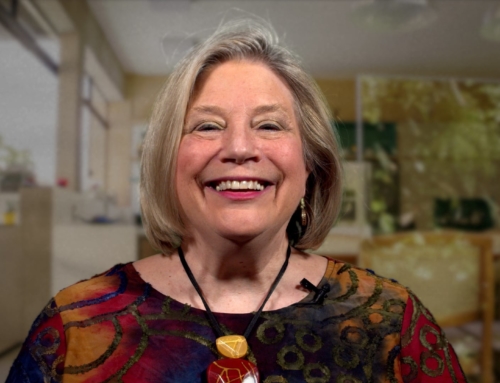A Discussion on Strategies, Behaviors & Corrective Experiences with this Competent Protector
One of the most important corrective experiences that I am going to discuss in this training is re‐establishing a sense of safety because safety was so disrupted in the original experience–and one of the ways we can access that is installing a competent protector: giving the possibility to the client to access that experience of someone “having their back” because so often in Disorganized Attachment that’s one of the pieces that was missing, so that might be highlighted in your work with some people. That’s why I want to spend a little time on Competent Protector.
 Another thing that’s really, really important as a correction because of the internal confusion we were talking about – is re‐establishing clarity, even if it’s clarity about what was threatening and where safety is, but really getting a sense of clarity. Clarity, in a way, is again a part of our “beingness” that we can lose access to – and people very often are legitimately confused when they have had this dynamic, so one of the things I’ll say back to the client is, “I can see that you are very clear about your confusion.” …Even naming the confusion, and clarifying that it’s natural to be confused in such a situation, it’s helpful. Being clear about the difficulty, or being able to describe the “orange”… or any of these things are to help people be clear and have that resource on board, even as they are going into the complexity of a situation.
Another thing that’s really, really important as a correction because of the internal confusion we were talking about – is re‐establishing clarity, even if it’s clarity about what was threatening and where safety is, but really getting a sense of clarity. Clarity, in a way, is again a part of our “beingness” that we can lose access to – and people very often are legitimately confused when they have had this dynamic, so one of the things I’ll say back to the client is, “I can see that you are very clear about your confusion.” …Even naming the confusion, and clarifying that it’s natural to be confused in such a situation, it’s helpful. Being clear about the difficulty, or being able to describe the “orange”… or any of these things are to help people be clear and have that resource on board, even as they are going into the complexity of a situation.
So, just, as much as you can, presencing and saying the words like “clarity.” One of the ways that shows up is parents at times – or that might be a pattern in parenting – is to create a double bind, such as giving a contradictory message like, “Come here, Go away” at the same time. There is a confusion just in the way the communication is delivered. There’s a live example of that which one of my client shared: the mother really liked having a very clean house and they always had chores every Saturday and the kids were relatively young but helped with the chores. So the mother would say, “Okay, I want you to clean the house” and the kids tried to clean the house, I mean, they would start to dust or vacuum and clean the floors, and her immediate response would be, “No, you don’t do the dusting first, you were suppose to be doing this first” or, “you shouldn’t to do this first, you have to do that first” and so on. The confused children would say, “Could you just tell us what you want first, second, third?” and she would go, “You lived here this long and you don’t know how to clean the house?” I mean, there is no way to get an answer that gives you any clarity… if someone is communicating with you like that, they are just in their hysteria, or they are making you wrong. In a situation like that can be part of a pattern in the family that produced a lot of chaos, with the consequence of a lot of disorientation or inability to solve problems later because you are, in a way, set up to fail: no matter what I do is wrong, I am trying to do the ‘right thing’ but no matter what ‘I do’ is wrong.
Some of your clients might have had that history, and some of us might have had that history… so the parents not necessarily intending to, but probably from their own histories – set up chaotic, scary, disorienting, disorganizing situations for the infant. It feels like, “I can’t do anything right…” so sometimes, later, your clients won’t even try things… trying is mitigated, because the feeling of, “I will fail” is so strong, right? There can also be giving conflicting, confusing signals which somehow goes with that.
One of the other things that sets up disorganization in the Attachment system is, extreme shifts in state: one story a client told me was that the mother in some occasions would be literally raging, yelling and being upset at the child, then the doorbell would ring while she was basically in the middle of a tantrum and her friend would be at the door… and she would open the door and with a suave voice go, “Oh hi Sally! It’s so nice to see you, why don’t you come in for coffee? I just have a little cake in oven, come on in” And the kid is going like, “What?” right? Because such a sudden shift is very confusing to an Attachment system … and the child’s internalization of all of this is, if the parent is the source of fear, then you can’t use them as the safe haven they’re supposed to be as a source of soothing, right? – So who would you normally go to becomes instead the person that was mean to you, *mimicking a scared child’s voice* “That person was so mean to me!” So your Attachment system is just going “What? Oh what shall I do in that situation?”
So that’s why if your client has a family pet, or a neighbor, or a grandmother in the picture, or a nanny, or father, or son, or some other person that they can relate to, you as a therapist need to get those safe persons highlighted as a safe haven, because where the safe haven was supposed to be in their childhood was almost like contaminated water, right? A panicked kid will develop dis-attachment from that parent.
The other thing that is really important for us to highlight and to remember about this particular challenge is, a kid – and later an adult – is stuck in Approach‐Avoidance: “I want to connect to you, I want to get away from you. I want to connect to you… oh, that’s scary, I need to get away from you.” …And that’s why later in life – this is the tricky part! – That might be programmed in so much that it’s getting triggered into a reasonably safe marriage, but the dynamic is there, right?
A client once told me a story… while she was making dinner her husband would come in behind her to give her a hug, and her startled response was so wired‐in that she would almost hit the ceiling. He would go, “Geez, all I was going to do was give you a hug…” and she is like, “Yeah, sorry” but she cannot control that type of reaction until she works through it.
2 Comments
Comments are closed.







I was adopted at 6 months into a family that devalued who I was. My nicknames were “useless” “worthless” and “dingbat”. I am 52 years old and have found healing and fulfillment helping women find there voice before and during birth. .
I am ready to go deeper and would like healthy committed longer term relationships. Not sure if it is possible. Learning to trust myself more and more. Ready to move beyond the auto-lack of trust response.
When no one is safe, you do not know that there are safe people. Finding this out is golden. Learning to see toxic people in life is freeing.